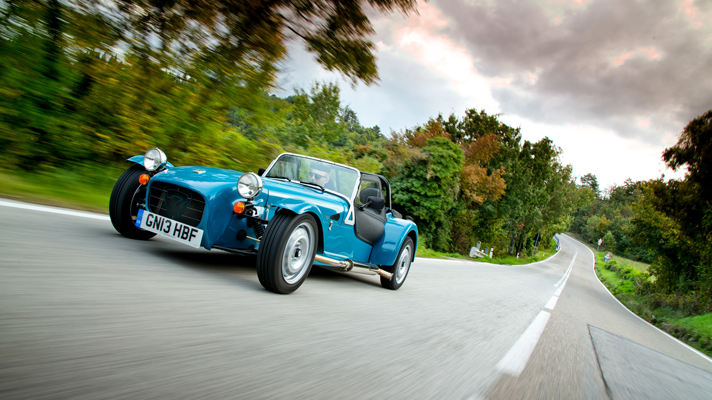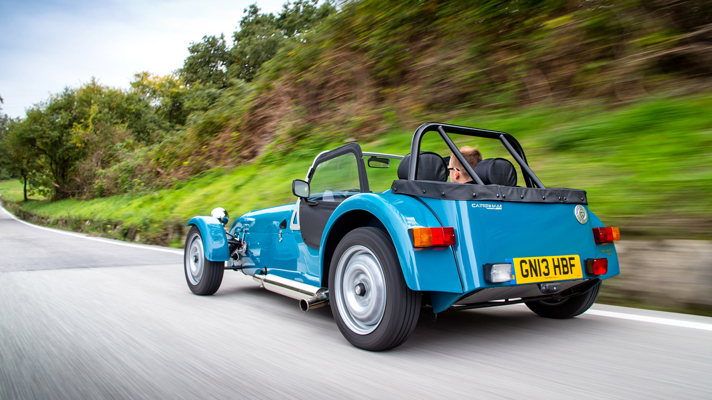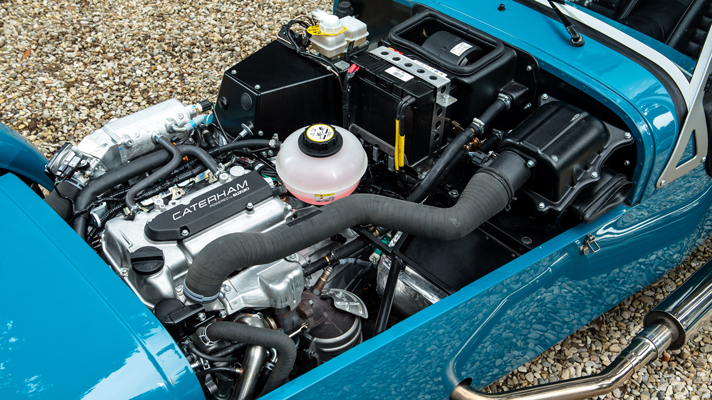
First drive: Caterham Seven 160
By making arguably the least fashion-oriented car ever, Caterham has managed to ride out every fickle trend and economic speed bump the past four decades has chucked at it. It's ironic, then, that the, erm, ‘new' Seven 160 is a car that chimes perfectly with the times. It's cheap, it's light, and it makes not very much go a ridiculously long way.
Caterham's new model naming policy uses the car's power-to-weight, so here we're talking about roughly 160bhp-per-tonne. Sounds good, no? Less fizz-inducing is the 80bhp this thing actually makes, while 79 torques would leave the skins on most rice puddings unmolested. But the reality is that this is a fantastic recipe.
The engine is Suzuki's K-car 660cc, three-cylinder unit, boosted by a barely there turbo from 64bhp to 80, at a busy 7000rpm. The five-speed gearbox and live rear axle are also Suzuki-sourced, and the steel wheels are wrapped - if that's the word - in minuscule Avon tyres, 155 section at the front, a thumping 165 at the rear. You'll also find drum brakes back there. A technological powerhouse this is most definitely not.
Despite which, the 160 approaches genius. By reversing its obsession with wringing ever more from its mainstay model, this back-to-basics Seven isn't just highly entertaining, it reconnects you with the idea of driving at its most primal. There's obviously nowhere near enough power for any heroics, but those four tiny rubber contact patches mean that you still have to think about what you're doing rather than lazily relying on electronic chassis wizardry and fat tyres to bail you out.
Caterham underlined this rather romantic ideal by letting us drive the 160 on the Futa pass, an endlessly twisty Tuscan hillside road that the Mille Miglia made famous. It exemplifies all the usual Seven virtues: with its open wheels and tiny body you can place it on the road with millimetric accuracy, looping all the corners together is a doddle thanks to the superb steering, and despite a rear suspension set-up that Methuselah would have rejected as a bit old hat, it actually rides amazingly well and doesn't bounce your backside into the scenery.
As for that little engine, well it's mostly up to the job. It fizzes and chirps along surprisingly sweetly, and the triple's soundtrack and the proximity of the stick-thin exhaust are atmospheric enough. Give it the beans on a straight and it'll hit 60mph in 6.5 seconds, before the Seven's lack of aero sophistication overwhelms it (top speed is 100mph, but that may as well be a distant galaxy).
Up in the hills, the 160 does its best work above 2000rpm, and prefers to stay in third and fourth gear, even when the corners tighten. Dropping it into second is neither a particularly tactile pleasure - the 'box is a bit gnarly - or an aural one, and every one of those 79 torques is on your side so there's enough grunt. Exposure to the elements means you always feel as though you're going faster than you really are, and the truth is that you'll struggle to shake off a well-driven Fiat Panda. But it's still massive fun.
Besides, the 160's lack of muscle means you're free to plot the perfect line rather than heaving in and out of every corner like an ape. On greasy, leaf-strewn Italian roads, even 80bhp is enough to keep you sharp, and the Seven is so beautifully balanced and so light (just 490kg) that you can make progress with the lightest of touches on the controls, including a ‘dab of oppo' where necessary.
If this all sounds a bit pipe and slippers, don't be fooled. Toyota's corking GT86 is TG's reigning car of the year, and it's an over-wrought lard-bucket compared to the 160. Build it yourself and prices start at £14,995. Factory-built, the 160 costs £17,995. Either way, it's a gem.
Top Gear
Newsletter
Thank you for subscribing to our newsletter. Look out for your regular round-up of news, reviews and offers in your inbox.
Get all the latest news, reviews and exclusives, direct to your inbox.
Trending this week
- Car Review
BMW 1 Series
- Top Gear's Top 9
Nine dreadful bits of 'homeware' made by carmakers










